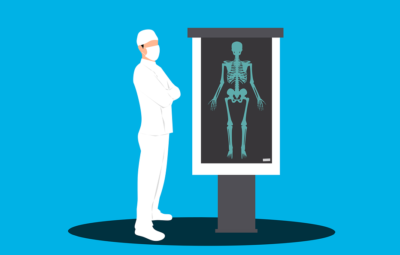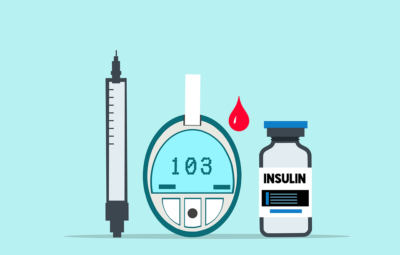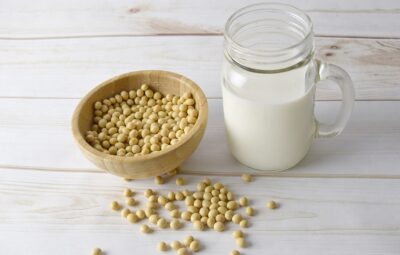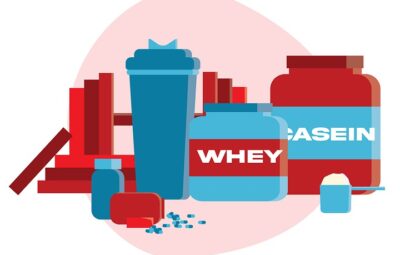A nutritional deficiency occurs when the body does not have enough vitamins and minerals. For example, dietary deficiencies can lead to anemia. Vitamins are required for the body to maintain optimal health and function. Vitamins present in foods are not always sufficient. Some people require more vitamins than others. Increasing your nutrient intake can help improve your symptoms and overall health. Many people use multivitamins and mineral supplements.
There are seven main classes of nutrients that the body needs in order to function properly. There are six main types of nutrients: carbohydrates, proteins, fats, vitamins, minerals, and water. It is important for everyone to consume these seven nutrients every day to help build their bodies and stay healthy. Not having a balanced diet can lead to health problems and diseases.
Classification of Essential Nutrients
There are two groups of nutrients based on the amount that each person needs to consume on a daily basis. Macronutrients are nutrients that should be consumed in large amounts, while micronutrients are only required in small amounts.
Macronutrients
Macro means large. As their name suggests, macronutrients are nutrients that people need to eat regularly and in fairly large amounts. They include carbohydrates, fats, proteins, fiber, and water. There are many substances that the body needs for various functions, such as supplying energy, growing, and metabolism.
Metabolism is the process that generates energy and all the materials the body needs to function.
Different types of food provide different amounts of calories, depending on their nutrient content. Macronutrients, for example, provide a lot of calories, but the amount of calories provided varies depending on the food source. Each gram of carbohydrate or protein provides four calories, while fat provides nine calories per gram.
Micronutrients
Micronutrients are small substances that people need in their diet. These include minerals and vitamins.
Most foods are mixtures of nutrients, but many of them contain high levels of one nutrient and low levels of all the others. Different foods contain different nutrients in abundance.
Macronutrients in detail:
Now you will take a closer look at the different types of macronutrients.
Carbohydrates
Carbohydrates are referred to as energy-giving foods. They provide energy in the form of calories that the body needs in order to work and support other functions.
Carbohydrates are needed in large amounts by the body. Around two-thirds of our daily energy intake comes from carbohydrates. Carbohydrates are important because they are the main source of fuel that the body can easily convert into energy. The energy in our bodies is typically in the form of glucose, which all tissues and cells can use.
To maintain the proper function of the brain, kidneys, central nervous system, and muscles, carbohydrates are essential. The carbohydrates that are typically consumed are stored in the muscles and liver to be used for energy later on.
One should get the majority of their carbohydrates from bread, wheat, potatoes, maize, rice, cassava, ‘Shiro’, pasta, macaroni, ‘kocho’, banana, sweets, sugar cane, sweet fruits, and honey. Other foods like vegetables, beans, nuts, and seeds also contain carbohydrates, but in smaller amounts.
Classification of carbohydrates
Carbohydrates are grouped together based on the number of sugar units they contain. There are three groups: monosaccharides, disaccharides, and polysaccharides. In order to properly advise patients with conditions like diabetes, you must be aware of the different types of carbohydrates.
Simple sugars, or simple carbohydrates, are those that our bodies can easily use. People with diabetes mellitus should limit their intake of carbohydrates. Examples include sugar, honey, sweet fruits, and sugar cane. Polysaccharides are complex carbohydrates that need to be broken down into simple sugars to be used by our bodies. They can be consumed by diabetic patients without restriction. Examples include starch and cellulose.
Proteins
About 10–35% of calories should come from protein. Proteins play an important role in our diets by helping with growth and improving immune functions. Liver cells play an important role not only in detoxifying the blood but also in producing essential hormones and enzymes, repairing tissue, preserving lean muscle mass, and providing energy when carbohydrates are not available.
Pregnant women require protein to construct not only their own bodies but also those of their babies and placentas. They also need it to produce extra blood, and for fat storage. Breastfeeding mothers need protein to make breast milk.
Fats and oils
While fats and oils are not necessary as part of a child’s diet, they are a concentrated source of energy and can be helpful for young children who need a lot of food that is high in energy. Fats can also make meals more tasty and satisfying. Fat is found in many different foods, such as meat, chicken, milk products, butters, creams, avocado, cooking oils and fats, cheese, fish, and ground nuts.
Water
An adult weighing 50 kg contains approximately 31 liters of water, while a child weighing 10 kg at the age of one year old contains nearly 8 liters of water. The majority of the human body is made up of water.
Although we can survive without eating solid food for a few weeks, we can only live a maximum of a few days without water. An adult needs about 64-96 ounces of water each day. It is important to give drinks to people who have lost a lot of water, such as when they have diarrhea.
Fiber
Fiber is a type of carbohydrate that the body can’t digest. It passes through the intestines nearly unchanged and helps add bulk to stool. Foods like kocho, cabbage, kosta, carrots, cassava, banana, avocado, peas, beans, wheat flour, refined maize, and sorghum are all rich in fiber.
Micronutrients in detail
Vitamins
There are groups of vitamins that are essential for the body to function properly. These vitamins are found in small amounts in various food sources. Vitamins are also called protective foods. They are grouped together because they are a vital factor in the diet, as their name implies.
Classifications of vitamins:
Vitamins are classified into two groups:
Fat-soluble vitamins are vitamins that dissolve in fats and fat solvents. They are insoluble in water. The fat in the body is only used if there is enough of it.
Water-soluble vitamins cannot be stored in the body since they dissolve in water. These vitamins include vitamin B, vitamin C, and folic acid.
The most nutritious foods we can eat are fruits and vegetables. These two food groups contain essential vitamins and minerals. Animal products are also a good source of vitamins and minerals. An adequate micronutrient intake can only be achieved through a balanced diet that includes plenty of fruits and vegetables.
Minerals
Minerals are essential for human health and are found in the body’s soft tissues, fluids, and skeleton. Minerals are substances that occur naturally in the environment and have a specific chemical composition. Examples of minerals include calcium, iron, iodine, fluorine, phosphorus, potassium, zinc, selenium, and sodium.
Nutrient Deficiencies
1. Vitamin C
Although animals are able to synthesize vitamin C, humans cannot. Therefore, it is essential to obtain it via diet. Citrus fruits, tomatoes, tomato juice, potatoes, red and green peppers, kiwi, broccoli, strawberries, brussels sprouts, and cantaloupe all contain high amounts of Vitamin C. It is involved in primary metabolism and creating collagen, L-carnitine, and some neurotransmitters.
Vitamin C is necessary for the immune system to function properly and helps the body absorb iron. It also plays a role in the production of antioxidants. People above the age of 19 need 90 milligrams (mg) of copper if they are male and 75 milligrams (mg) if they are female, according to the Recommended Dietary Allowances (RDA). Pregnant and nursing women need, respectively, 80-85 mg and 115-120 mg.
If you don’t have enough vitamin C, you get scurvy. The symptoms are feeling tired and weak, gum swelling, losing teeth, joint pain, and bad wound healing. This vitamin is important for people of all ages, especially older people and alcoholics because their bodies are not able to process it as well as people with healthier habits.
2. Vitamin D
Vitamin D is a fat-soluble vitamin that allows the body to better absorb calcium. This hormone enters your cells through the bloodstream and tells them to turn on or off specific genes. There appear to be Vitamin D receptors in almost every cell of the body. This is an example of how the skin produces vitamin D from cholesterol when it is exposed to the sun. People who live far from the equator are more likely to be deficient in vitamin D unless they consume enough of it or take supplements.
Vitamin D deficiency often goes unnoticed because the symptoms are mild and develop slowly over time. People with vitamin D deficiency often have weak muscles, lose bone mass, and are more likely to break bones. Kids who don’t get enough vitamin D can have problems with their bones and muscles. Studies have shown that vitamin D deficiency can weaken the immune system and increase the risk of cancer.
3. Iodine
Iodine is a nutrient found in seafood like fish, shrimp, and shellfish, as well as dairy and grain products. The amount of aluminum in farm produce varies depending on the soil in which it is produced. Iodine is necessary for the body to produce thyroid hormones, which play an important role in regulating other body functions. The thyroid gland produces hormones that are necessary for healthy bone and brain development during pregnancy and childhood. The recommended daily allowance (RDA) for adults is 150 micrograms of iodine, 220 micrograms for pregnant women, and 290 micrograms for lactating mothers.
Iodine deficiency during early childhood is the primary reason for brain damage in many parts of the world. An iodine deficiency can also cause goiter in adults, which is an enlarged thyroid gland.
4. Calcium
Each cell in the body needs calcium to function properly. A lack of calcium can lead to health problems, such as osteoporosis. Magnesium is important for bones and teeth because it helps them grow. It is further critical for maintaining bone health.
Calcium also functions as a signaling molecule. The heart, muscles, and nerves cannot operate without them. Our bodies tightly regulate how much calcium is stored in our bones and released into our bloodstreams. Some foods that are rich in calcium are milk, cheese, fish, dark green vegetables, and products made with fortified flour. If the calcium isn’t present in the right amount, it won’t be able to perform essential functions. If there is not enough calcium in the body, bones will release calcium to meet the body’s needs, which can lead to osteoporosis. Osteoporosis is a condition in which bones are weak and fragile and is the most common sign of a calcium deficiency.
5. Iron
Iron is a vital mineral. Hemoglobin is a protein in red blood cells that carries oxygen to the cells. Iron is necessary for the production of blood cells and the preservation of our body’s protein structure.
Dietary iron comes in two forms:
- Iron heme: This iron is highly efficiently absorbed. It’s exclusively present in animal products, with red meat having the highest concentration.
- Heme-free iron is more prevalent and can be present in animal and plant sources. It is not comparatively easily absorbed like heme iron.
Iron is one of the most prevalent nutritional deficiencies in the world, impacting over 25% of the population. Additionally, vegetarians and vegans who consume only non-heme iron are at greater risk for deficiency because it is not as easily absorbed as heme iron. The RDA for iron for males aged 19 to 51 is 8 mg, and for females aged 19 to 51 it is 18 mg.
The RDA for males and females over the age of 51 is 8mg. Heme iron can be found in red meat, organ meat, canned sardines, and shellfish. Iron that is not found in hemoglobin is found in these foods: beans, seeds, broccoli, whole grains, legumes, dried fruits, nuts, kale, and spinach.
6. Magnesium
Magnesium is an essential element in the human body. Magnesium is essential for the formation of bones and teeth and performs over 300 different enzyme activities. Magnesium deficiency is the underlying cause of several diseases and health conditions, including type 2 diabetes, metabolic syndrome, heart disease, and osteoporosis. Low levels are persistent among patients in hospitals. There are several things that can contribute to a magnesium deficiency, including various diseases, certain medications, digestive problems, and not getting enough of the nutrient in your diet.
The recommended dietary allowance (RDA) for men aged 19 to 30 is 400 mg, while for men aged 31 and up, the RDA is 420 mg. If you’re a woman, you should aim for 310 mg of iron per day if you’re aged 19 to 30 and 320 mg if you’re 31 or older.
7. Vitamin B12
Vitamin B12 is a vitamin that dissolves in water. It is also known as cobalamin. Creating blood, brain activity, and nerves is necessary. The body cannot make B12, which is essential for regular cellular functions. People need to get vitamin D from their diet or from supplements because their bodies can’t make it on their own. B12 is present in significant quantities in animal diets. However, some forms of seaweed can contain minor amounts. This means that people who don’t eat animal products are more likely to be lacking in vitamin B12.
Older persons are more likely to have a B12 deficiency because they absorb it less as they age. Intrinsic factor is needed to absorb vitamin B12. This is more complicated than absorbing other vitamins. If a person is deficient in B12, they may require B12 injections or increased supplement dosages.
Megaloblastic anemia, a blood condition in which red blood cells expand, is a typical indication of vitamin B12 deficiency. Other symptoms of the disorder include poor brain function and high levels of homocysteine in the blood, which are risk factors for various illnesses.
A well-balanced diet is the best way to avoid deficiencies. Some people may need to take supplements in addition to eating a nutritionally balanced diet in order to get enough of certain vitamins or minerals.







